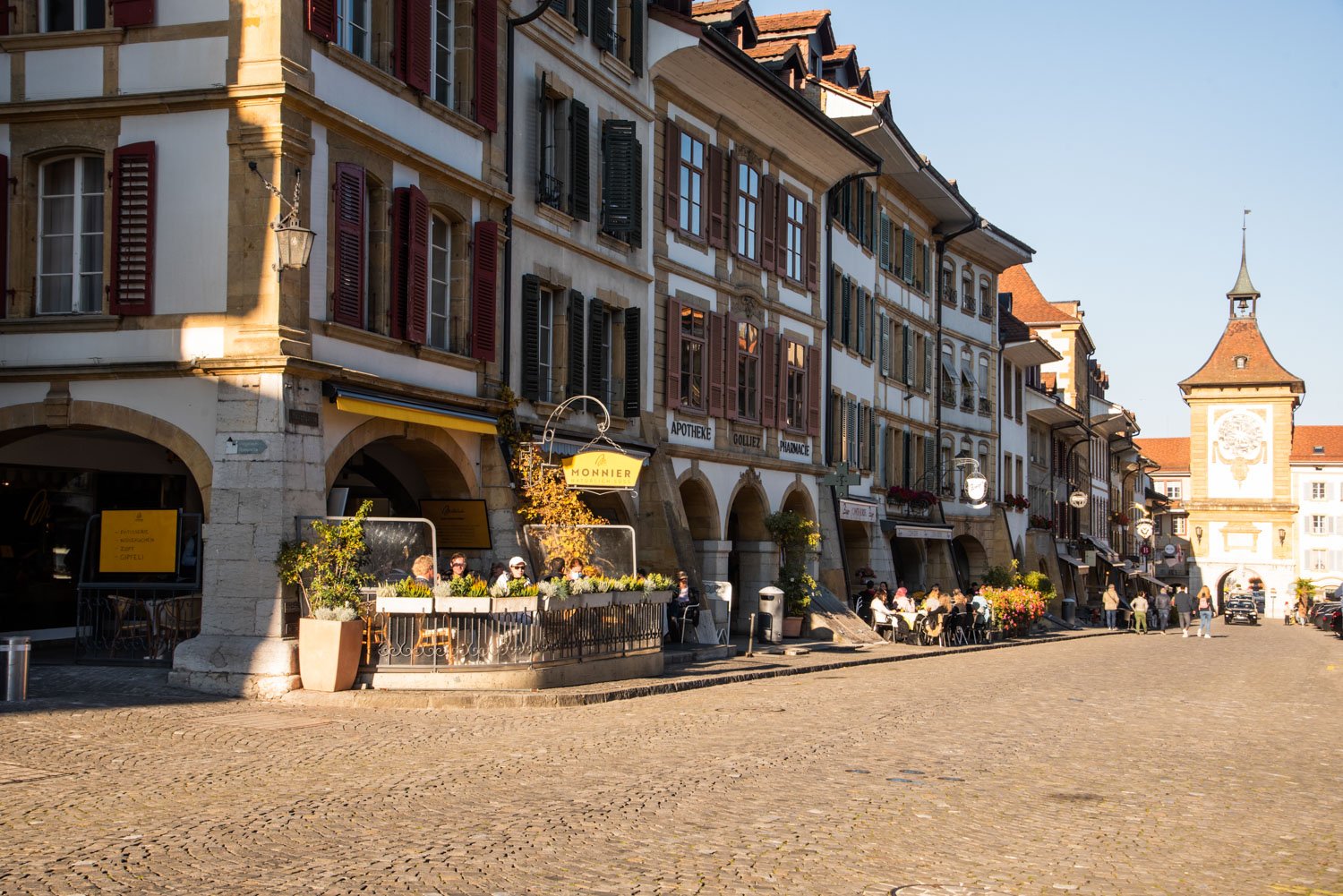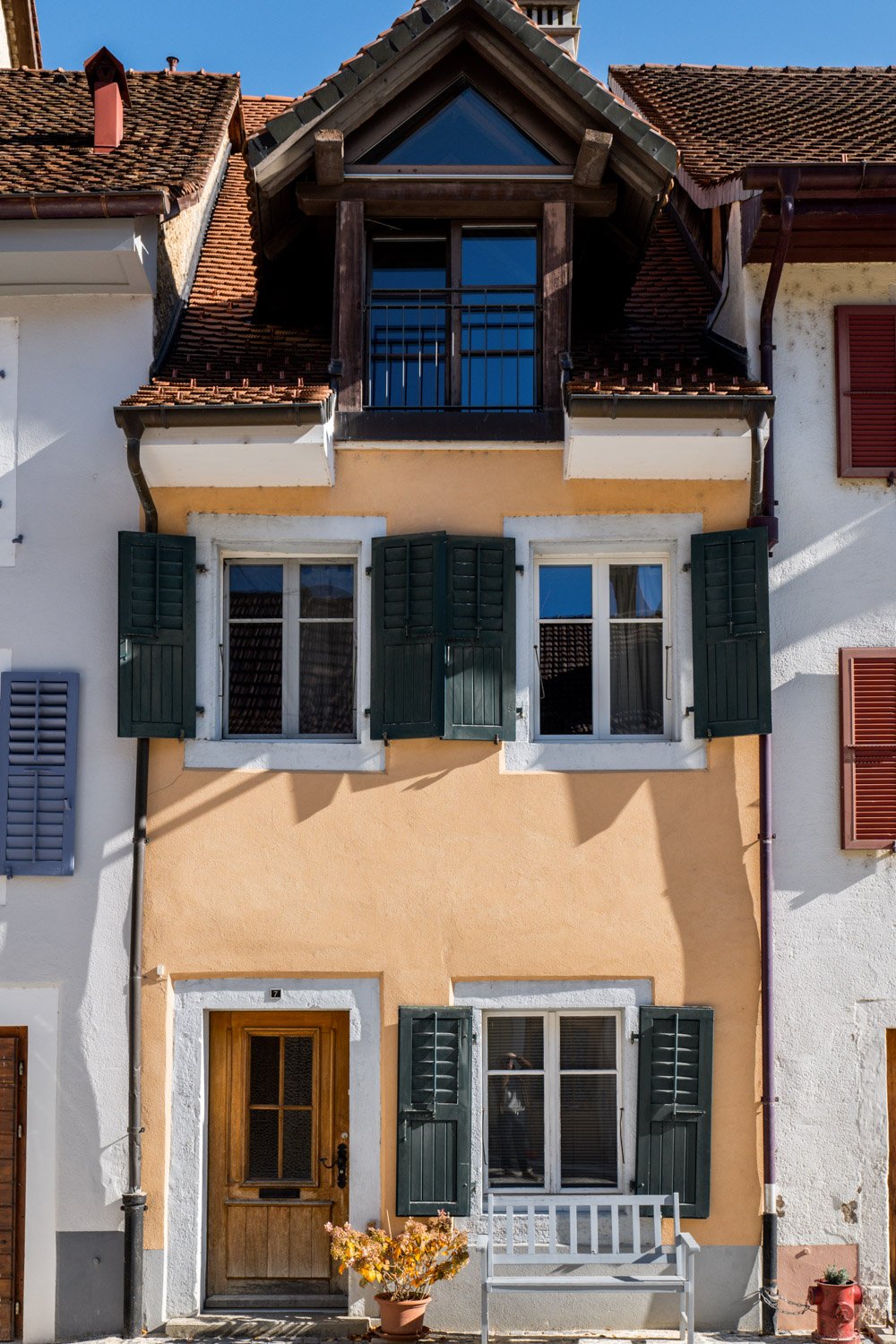Unexplored Switzerland: Jura 3 Lacs region
At the western border of Switzerland there is a little known region, holding surprising villages, unusual mountain landscapes, hills and vineyards overlooking lakes, mediterranean-like rather than typically swiss towns. The region is called Jura 3 Lacs, because it includes the three lakes of Murten, Bienne and Neuchâtel, but rather than a real region, it is an interregional territory that resides in the cantons of Jura, Neuchâtel, Fribourg and Bern. As you travel through these areas, you will instantly pass from the dense forests of the north, to the vineyards, to the plains dotted with grazing animals, as well as from German-speaking towns to French-speaking villages, from small fortified medieval towns to full-fledged cities with a distinctly French character.
WHAT TO DO AND WHAT TO SEE
Let's start our exploration of this region from the Jura, where the three villages of Delemont, Saint-Ursanne and Porrentruy are unmissable destinations.
Delemont is a real town, and the capital of the canton. Enclosed between two medieval gates, it has a center that can be easily visited with a short walk through the wide streets lined with colorful buildings and alternating squares with monumental fountains around which the locals crowd the small farmers' markets.

Saint-Ursanne is a small delightful village, of monastic origin, whose medieval center is enclosed within walls and revolves around a beautiful collegiate church consisting of a cathedral with an adjoining cloister.

A couple of streets unravel between houses with shutters and facades cheerfully colored. On one side, the town is bordered by the river, on the other by an imposing and luxuriant hill. The cathedral and the cloister can be visited freely, an oasis of peace within the already quiet and pleasant village.
The town of Porrentruy is the second largest in the region, yet it is small enough to take no more than a couple of hours at a leisurely pace to visit. It has a very different character from the other two, with its baroque and neoclassical center climbing a hill on one side, and culminating in a mighty castle on the other. The buildings have a decadent and unkempt look, giving a special charm to this place. The ascent to the castle is a must to get a particular point of view of the city.
Proceeding towards the fortress, you'll come across a bizarre entrance door that indicates access to the castle, among anonymous houses in the center. Enter and climb the imposing wooden stairs, up until you come out of one of the towers on the terrace inside the fortress. From here you can admire a beautiful view over the rooftops of the city center and the hills behind.


We move towards Lake Bienne along the mountain road that goes to Chasseral, and crosses the homonymous park. This beautiful scenic road goes through forests and pastures, winds up to the barren hills of the Chasseral, and at the top offers a beautiful panorama of the entire region of the three lakes, with the snow-capped mountains as a backdrop.
The road then descends towards the lake in correspondence of Twann: this small village, very picturesque even if tiny, offers a starting point for a small excursion among the vineyards. The area is in fact (little) known for its beautiful vineyards which slope down to the lake, lapping the little villages along, with their wine cellars, the buildings with colored portals and shutters, and the facades covered by vine shoots.

In order to admire the beautiful view of the lake, the glimpses among the vineyards, and the three villages of Twann, Ligerz and La Neuville you can park in Twann, near the train station, and go southwest on the road that crosses the village. At a certain point, a staircase on the right goes up towards the vineyards, and continues on a dirt path that crosses them, until you reach the beautiful cathedral that towers over Ligerz. This place offers a beautiful viewpoint over the lake and the sunset. You can continue to La Neuville, or go down to the small village of Ligerz, whose houses, hidden behind the curtain of the road that runs along the lake, are really picturesque. Walk back to Twann on the road along the lake or take a 5-minute train ride.
Although not much praised in travel guides, Biel is also worth a visit. The historic part of the city is actually very small, and has given way over the years to more modern neighborhoods and the headquarters of the watchmaking industry. The center, however, is very picturesque, with cobbled streets, the great Gothic cathedral occupying its center of gravity, and small squares around which stand the old guild houses. There are many cafes and restaurants in the old town, and an evening stroll by the light of the street lamps will not leave you disappointed.
The city of Neuchâtel, in the canton of the same name, will amaze you: it has an almost Iberian city feel, with its houses and churches made of honey-colored stone and white plaster, or that of a medieval French town, with its buildings with gables and colored shutters.
Amidst squares with sculptural fountains and streets going up and down the hill, climb up to the top that houses the imposing collegiate church, with its cathedral and cloister, and the castle, around whose walls you can take a panoramic tour to admire the Parisian-style roofs that stand out against the blue lake. A must is also the walk along the lake, with the endless view towards the Alps and a beautiful walkway that dives into the water.

The last village, which deserves a special mention in this itinerary, is Murten, on the lake of the same name, this time in the canton of Fribourg. The medieval walled town is perfectly intact, and truly charming, with houses pierced by large leaded windows and colored shutters, and characterized by large arches and arcades. The idyllic and very lively center is surrounded by the perfectly preserved walls, on which you can climb to walk the entire eastern side of the fortification, and observe from above the roofs studded with chimneys, which rise against the panorama of the lake.
On the western side of the city, some belvederes offer views of the lake and of the hills of the opposite bank, also covered with vineyards.



For a nature excursion in the region, you can reach the Creux du Van, on the eastern side of Lake Neuchâtel. It is a natural rocky amphitheater almost 200 meters high which offers wide views on the surrounding valleys surrounded by forests.

Through the Val de Travers, you reach the Restaurant de Soliat, from where the easy hiking trail to the crest of the canyon begins. A 20-minute walk takes you already to a couple ofl viewpoints, but you can continue along the ridge to admire the formation from different points of view. The path crosses a heath with some rocky areas, and from the opposite side of the canyon, you reach the highest point of Mount Le Soliat, from which you can admire an endless panorama towards the lake and the mountains.

WHERE TO STAY AND WHERE TO EAT
In order to have a barycentric point with respect to the region to visit, we have chosen to stay at the Hotel de l'Ours in Preles, near Lake Bienne.
From this hotel it's easy to get around, and it's a good stopping point for a weekend in the area.
The lodging is modern and cozy, and most importantly, we recommend dining at the hotel for a truly fabulous meal. In fact, the hotel offers a 3-course set menu in the evening, which varies daily, that will leave you speechless. We enjoyed a dinner with pappa al pomodoro with burrata cheese and truffles, pork tenderloin with vegetables and a memorable pear semifreddo. Even breakfast is offered with attention to detail and high quality products. Highly recommended.





































